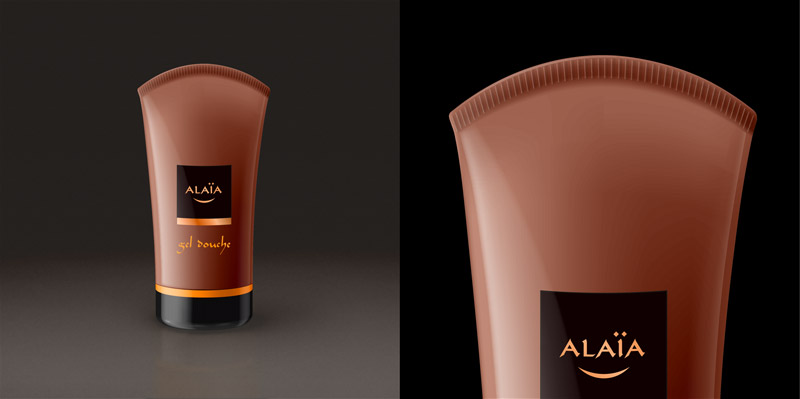
The first paint tubes were patented in 1841 by John G. Rand and used by Winsor & Newton, manufacturers of artists’ materials in London.
Although those first tubes were made of metal, patents show that some time before the second world war, tubes made at least partly of “Celluloid, Cellophane or regenerated cellulose, cellulose acetate or other suitable cellulose derivatives or thermoplastic materials” became available.
It wasn’t until the late sixties, however, that toothpaste tubes made partly of plastic became a household item, and all-plastic toothpaste tubes were introduced only in the 1990’s.
Most of the time, metal tubes are closed by folding the end a few times. This closure method dictates the form: the end of the tube is therefor straight. When plastic tubes became common, they too had a straight end – although they were not folded, but hot-sealed shut. The form was no longer fully determined by technological principles – but nevertheless remained unchanged for decades.
Cosmetics tube
Plastic tubes have gradually taken the place of metal ones. They’re lighter, more durable, unbreakable and less prone to leaking. But they also offer more design freedom – a fact that hadn't yet been noted in the late eighties.
Jan van Es recognized the possibilities the new materials and technologies offered, and created a cosmetics tube with a distinctive new look. The curved sealing is decidedly different, and also makes sense from a technical point of view.
The tube was designed as part of a study project to design a cosmetics line for Paris fashion designer Azzedine Alaïa. The project was presented in the booth of the NVC Netherlands Packaging Centre at the Macropak trade fair in 1988.
The idea was quickly picked up by small and major companies in the cosmetics and personal care field. Nowadays, tubes with rounded, wavy or oblique ends are a familiar sight in the stores.
![Jan van Es [design]](images/JvE-d.png)
![Jan van Es [design]](images/JvE-d-footer.png)